Ideally, all new hunters would have mentors to guide them through the steep learning curve of becoming a competent, ethical and law-abiding hunter.
But even if you have a mentor, they may not always be able to be there for you, and they may not remember what it’s like to be starting from zero. So, it’s important for you to take responsibility for your hunting experiences.Complete hunter education
 As of this writing, hunter education in California can be completed online. But if it reverts in the future to requiring finishing the course in person, you need to plan ahead for how much time that will take.
As of this writing, hunter education in California can be completed online. But if it reverts in the future to requiring finishing the course in person, you need to plan ahead for how much time that will take.
There are advanced hunter education courses you can take to expand your knowledge of various types of hunting. Also, while California does not require bowhunter education, many states do, so archers would do well to take the course here if they might hunt out of state.
KNOW THE REGULATIONS
Regulations are not easy to read, but it is important to read them, and to ask for help if there’s anything you don’t understand. In some cases, there may also be summaries that are easier to understand.
Different game animals require different stamps, tags or validations, and in all cases you must carry those documents with you when you hunt. While you can purchase these online, keep in mind they will take time to arrive in the mail. Licenses, tags and stamps can often be purchased at sporting goods stores, Walmarts and “hook-and-bullet” stores – call ahead to be sure.
Legal shoot start and stop times vary by game. Limits vary.
One of the hardest things to read in the regs is boundaries for hunting zones, where applicable. In some cases, maps will be available, but if you are hunting near the edge of a boundary, it helps to know precisely where it is, which you can learn by reading the boundary language.
PREPARE FOR THE LOCATION
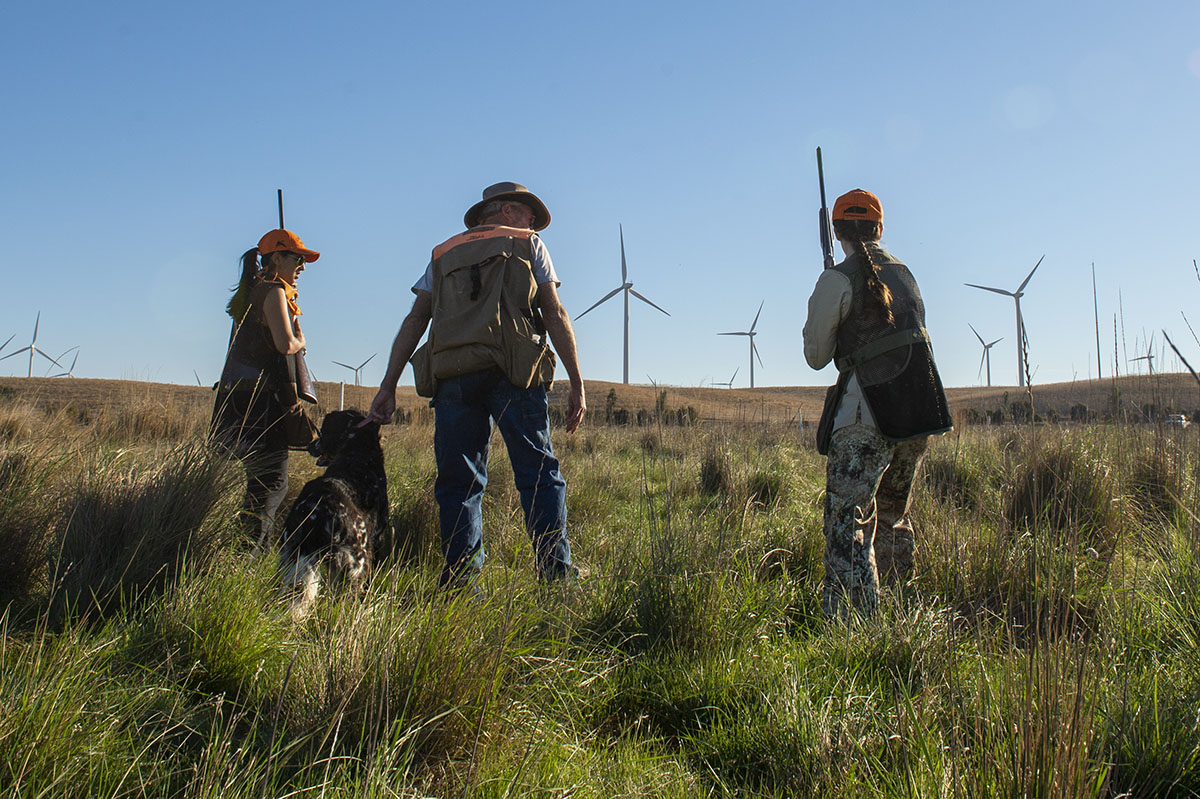 Do your research ahead of time.
Do your research ahead of time.
- Use Google maps or a hunting app to look at the territory (to explore your options, search online for “hunting apps” or ask fellow hunters in social media groups for their recommendations).
- Check weather forecasts, and be sure to look at the hourly forecast to understand the lows and highs and when significant changes might occur (wind, rain, snow). This can help you make decisions about layering and choosing the correct outerwear.
- If hunting a wildlife area or national wildlife refuge, download, print and take maps of the area so you’re familiar with boundaries of closed areas and the units where you may hunt. For waterfowl hunting areas, it is especially critical to understand where roads cross waterways – walking across a waterway is not advised, as the water may be over your head, or the mud may be so deep that you will get stuck.
- Consider your fitness for the terrain you’ll be in, e.g., steep mountains, long hikes, walking through water and mud in a marsh. It’s best to get in shape ahead of hunting season to improve your strength and endurance, but if you’re not very fit and the hunt is imminent, make plans to avoid doing more than you can handle.
- When hunting remote areas where getting lost or stranded overnight is a possibility, be sure to bring emergency equipment including mirrors and whistles for alerting rescue squads, food and water and/or a water filtration device, waterproof matches for starting a fire (but be EXTREMELY cautious with this during fire season), mylar blankets and first aid kits. Always tell a friend or family member where you’re going and when you expect to be back so they can alert authorities at the first sign of trouble. Don’t forget to check in with them when you leave the field!
- If you have a hunting app that allows it, record your track from the minute you leave your car – this will help you find your way back if you become disoriented.
Looking for a place to hunt? This page has links to hunting location options in California.
GET THE RIGHT CLOTHING
 You don’t have to buy top-of-the-line clothing for every hunt, but you do need the right clothing, which varies depending on conditions and concealment requirements. When going on organized hunts, such as the events California Waterfowl offers, loaner gear is sometimes available – ask ahead of time.
You don’t have to buy top-of-the-line clothing for every hunt, but you do need the right clothing, which varies depending on conditions and concealment requirements. When going on organized hunts, such as the events California Waterfowl offers, loaner gear is sometimes available – ask ahead of time.
Color: Blaze orange is advised, and sometimes required, for hunts in which you are not hiding. Camo or neutral colors are advised when hiding. Birds see color; mammals don’t.
Specialized gear: Upland vests are great for bird hunting because they include shell pockets in the front and a pouch in the back for holding your birds, and they almost always feature blaze orange. Waterfowl waders (not fishing waders) are essential for duck hunting. So are waterproof or water-resistant jackets.
Footwear: Sturdy hiking boots are a must for most hunts. We don’t hunt exclusively from manicured trails, so uneven footing is common.
Fabrics: Wicking fabrics are great for high-exertion hunts, but pants made of wicking fabrics can pick up a lot of burrs, especially in much of California’s landscape. Quiet fabrics are a must when you must move quietly.
Hats: It’s always a good idea to wear a hat to hide your head/eyes, provide relief from the sun or keep your hair from blowing in your face when you’re trying to shoot. Some hats have built in masks to hide the rest of your face.
Layers: It’s very common in California for temperatures to change by 40 degrees between the time you set out and the middle of the day. It’s wise to wear layers that can be removed, and have a pack that can hold removed layers.
Backpack: There is a huge variety of backpacks available to hunters, and rarely is there one pack that’s best for all hunts. Think about what you need to carry on a hunt and choose your pack accordingly.
A note for women: More and more women’s hunting clothing is becoming available, but supplies in brick-and-mortar stores can be meager because women still represent a relatively small percentage of all hunters. Give yourself time to order clothing online and time to return it and reorder if the sizing isn’t what you expected.
FIREARM/ARCHERY EQUIPMENT
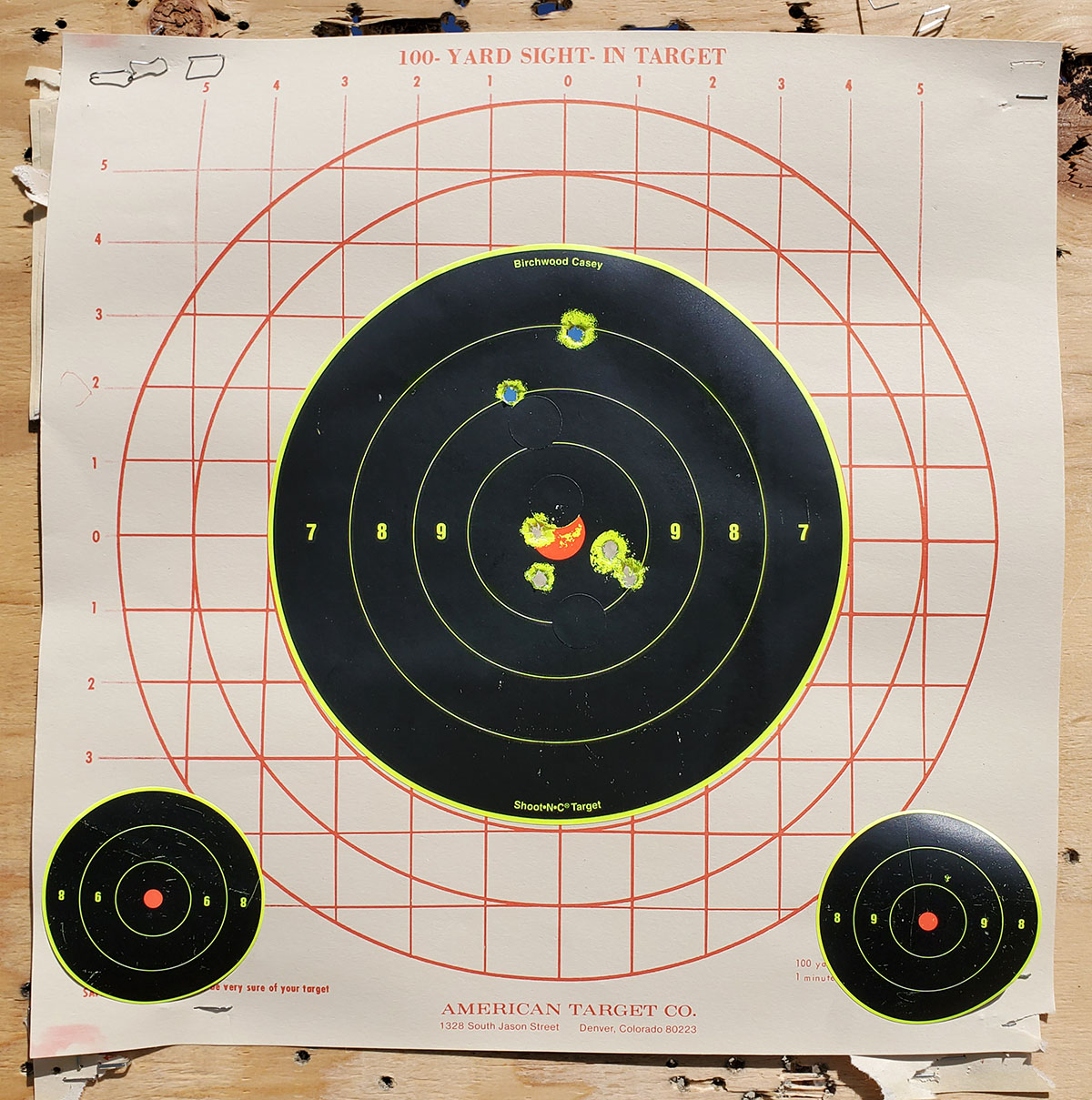 Acquisition
Acquisition
Make sure you either purchase or borrow a firearm or archery equipment that is legal and ethical for your hunt. In some cases, there are area-specific or game-specific requirements. For example, you can’t use rifles at most California wildlife areas. With archery equipment, you need to make sure you have the proper equipment that can deliver a lethal shot for the game you are hunting – not all archery equipment is made for hunting.
Firearms require a background check and 10-day waiting period. Once you are in California’s background check system, you can purchase ammunition with a $1 instant background check, but if you have not yet purchased a gun here, you will have to pay $19 for a background check and wait several days to pick up your ammunition. Learn more about ammo background checks.
Lead-free ammunition is required for all hunting in California with rifles and shotguns, but not with air rifles. As of this writing, there is a severe national ammunition shortage, so we advise you to purchase needed ammunition as early as possible. While it is possible to buy ammo online, it must be shipped to a licensed vendor who can process your background check – check ahead with your chosen vendor to make sure they are set up to do this!
With rifles, you need to sight in your gun with the ammunition you will hunt with to ensure the bullet will go where the crosshairs are pointing. All brands of bullets do not fly the same! This involves a trip to a shooting range. Search online for tips on sighting in – it is a precise process.
With shotguns, it is helpful to pattern your gun to see how big the spread of pellets is at the distances at which you’ll shoot. But because the shotgun is not a precision firearm, this is less critical than it is for rifles. However, it is extremely important to know the effective range of your shotgun, which depends on the shotshells and choke that you’re using. Patterning gives you that information precisely; however, you may find general information about the range provided by your chokes online or in an instruction manual.
Click here to read an article (PDF) about patterning shotguns.
Safety
Firearm safety is covered in many places, including your hunter education course and the manual that comes with your firearm. There is also a bowhunter education program that addresses archery safety. Always refresh your memory about safety when preparing for a hunt.
Practice
It is never a good idea to shoot a new or new-to-you firearm or bow for the first time while on a hunt. Make sure you give yourself time to practice before hunting. In many cases, new firearms need to be cleaned and lubricated prior to use. (Many are shipped with a coating of heavy oil to protect them during shipping; that oil needs to be removed and replaced with proper gun oil.)
With rifle hunting, you should be able to put bullets in an 8-inch-diameter circle at the distance at which you intend to shoot. For beginners, 100 yards is a good maximum distance.
YOUR TARGET SPECIES
Hunting guidebooks
The California Department of Wildlife has published many guides to various types of hunting in this state. You can find them online. Reading these guides will help you understand the animal’s habits and behaviors, which can increase your chances of success.
Shot placement
When hunting big game, research the location of heart and lungs for the type of animal you’re hunting so you know where to aim. Understand how the ideal point of bullet or arrow entry might change depending on whether the animal is broadside, or quartering forward or away, and also on your elevation relative to the animal’s.
Decoys and calls
While you can hunt virtually anything without decoys or calls, they're considered essential (or at least very helpful) for some types of hunting in California: waterfowl and spring turkey (both calls and decoys), dove (decoys) and elk (calls). Most calls require practice, which you need to do ahead of time. Practicing in the field can end up scaring animals away instead of luring them in!
Identification
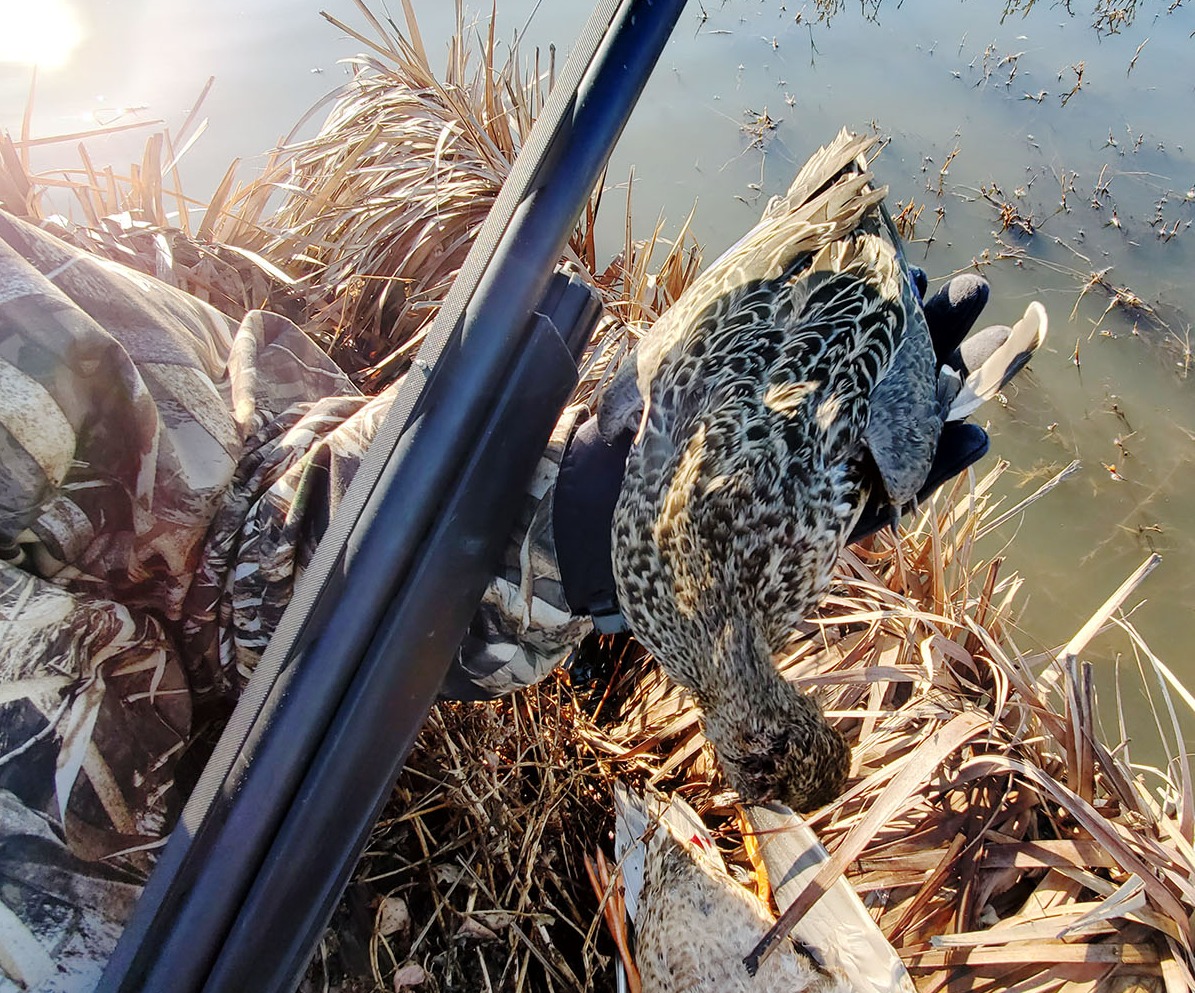 Some animal identification is quite easy (deer, pig, turkey) while others may be harder (waterfowl, doves, quail). For the difficult animals, it is strongly advised that you hunt with a mentor who can help you keep from making a mistake. However, if you need to hunt alone, you must be certain of what you’re shooting at. This likely means you will pass on many opportunities until you become adept at rapid identification.
Some animal identification is quite easy (deer, pig, turkey) while others may be harder (waterfowl, doves, quail). For the difficult animals, it is strongly advised that you hunt with a mentor who can help you keep from making a mistake. However, if you need to hunt alone, you must be certain of what you’re shooting at. This likely means you will pass on many opportunities until you become adept at rapid identification.
With waterfowl hunting, if you know the difference between a duck or goose and other birds that you can’t hunt, there is a way to hunt before you’re good at identifying individual species on the wing. You’ll need a good identification guide such as the LeMaster Method:
- If you shoot a bird, retrieve it and identify it.
- If you can have more than one of that species (which you’ll know because you read the regulations), you may continue hunting.
- If the limit on that species or sex is one, you must stop hunting because you can’t be sure you won’t accidentally shoot another one and go over the limit.
- Continue hunting until you have reached any limit.
Pro tip: After identifying the bird in hand, think back to how it looked, sounded and flew as it approached. This will help you learn to identify them on the wing!
FOOD AND WATER
For any hunt that won’t be incredibly fast, you will need to bring food and water. How much you bring depends on your body’s needs. How do you react to being hungry? To being thirsty? Will you be able to eat breakfast before the hunt or will you be running on empty?
For food, think about what will be easy to eat if you’re wearing gloves or trying to be quiet. High-calorie foods are helpful. So are easy-to-chew foods – it’s hard to blow a duck call with a mouth full of jerky (spoiler alert: blowing jerky fragments into your call renders it inoperable).
For water, reusable bottles and bladder packs (such as Camelbak) are good. Consider adding electrolyte tablets to your water if you’re going on a high-exertion hunt.
Remember to pack out your empty wrappers and bottles – they’re a lot lighter heading home than they were heading out, so there’s no excuse to leave them in the field.
FIELD DRESSING
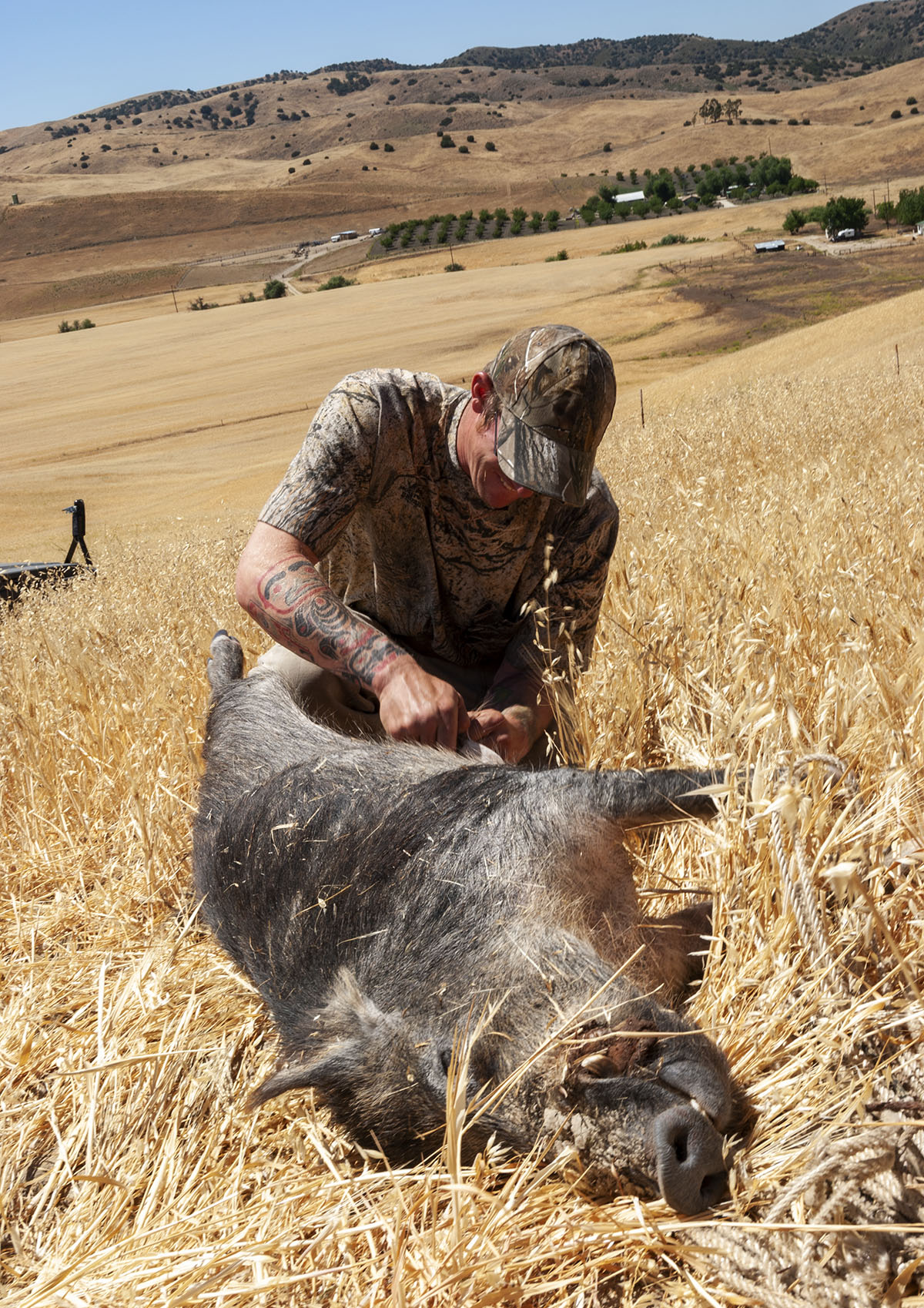 When hunting birds, it is typically fine to pluck, gut and break down your birds when you get home (though in warm weather, you must take care to keep them as cool as possible to prevent spoilage). But with big game and some small game, you need to at least gut animals in the field.
When hunting birds, it is typically fine to pluck, gut and break down your birds when you get home (though in warm weather, you must take care to keep them as cool as possible to prevent spoilage). But with big game and some small game, you need to at least gut animals in the field.
It is best to study how to do this ahead of time, as you may not have sufficient mobile signal to watch a YouTube video as you stand over the animal you have just killed.
Be sure to bring a sharp knife into the field when you might need to do field dressing. For large species, you may also want to bring a game bag to protect the animal from bugs and debris when you pack out. In some cases, it’s advisable to wear latex or nitrile gloves because some animal diseases can be transmitted to humans by contact with skin or open cuts in your skin. For example, rabbits can have tularemia, and pigs can have brucellosis. Though Chronic Wasting Disease is not yet present in California’s deer herd, it is in other states, so that’s something to think about if you hunt outside of California.
Parasites, while super gross, cannot be transmitted to you through skin contact. Many animal parasites cannot use humans as hosts. For those that can harm humans, there are known ways to either eradicate or kill any parasites that you can’t see and remove prior to eating.
Do research ahead of time to learn if there are any disease concerns with the game you’re hunting. Getting sick from wild game is extremely uncommon, so don’t panic – just be aware.
Hunting in warm weather? You may want to bring an ice chest, with ice already in it, that’s large enough to hold any game you might get for your drive home. Bring plastic grocery or trash bags to keep the meat from sitting in water (water provides a medium in which bacteria can grow).
HUNTING WITH GUIDES
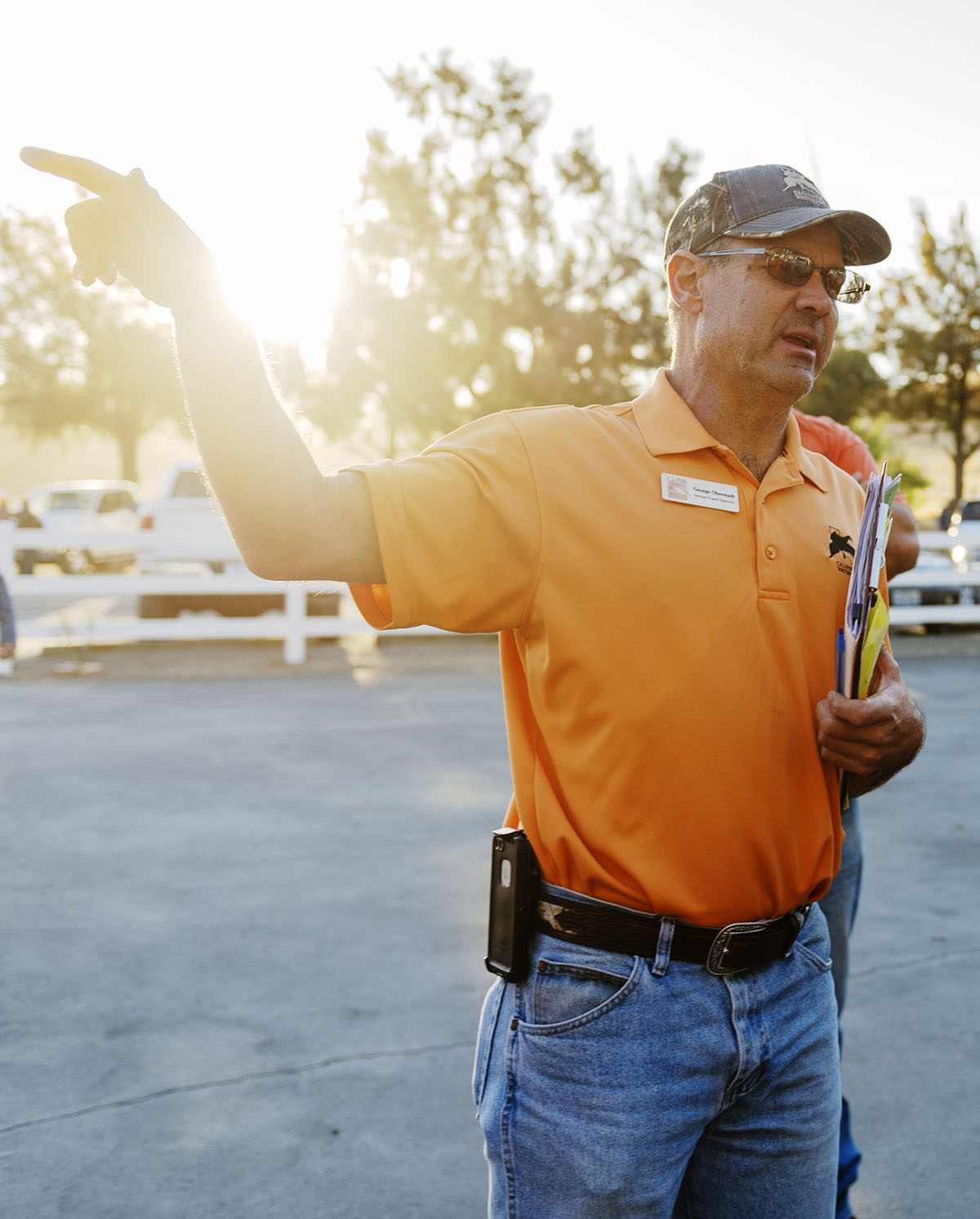 Guides frequently take out new hunters, but not all are versed in how best to help new hunters, so be wary of surrendering all responsibility for your success to your guide. Suggestions:
Guides frequently take out new hunters, but not all are versed in how best to help new hunters, so be wary of surrendering all responsibility for your success to your guide. Suggestions:
- Looking for a guide? Ask for references if you know any hunters. Also, the state maintains a list of licensed guides.
- Make sure your guide knows your level of experience so they don’t assume you know more than you do. Let them know your capabilities, and your goals for the hunt, e.g., whether you really want a trophy animal or limits, or just want to bring home some meat.
- Ask your guide how the hunt will likely play out (e.g., how much walking/hiking), and about the best clothing to wear. This will help you prepare.
- Ask whether the guide or you will field-dress animals. If you want to field dress an animal yourself, ask the guide ahead of time whether you can. Guides are extremely efficient at field-dressing and they may not be willing to teach or watch you attempt it, knowing that you will take much longer than they would.
- Find out up front what the guide’s fee will be and what forms of payment they accept. Some will require advance deposits; some accept full payment after the hunt.
- Understand that paying for a hunt does not guarantee success – animals do not always behave as we hope they do, and we don’t always shoot as well as we’d like. And you are typically required to pay regardless of whether you are successful.
- On the hunt, always follow your guide’s instructions. Their priorities are to keep you safe, keep you legal and help you succeed.
- After the hunt, it is proper etiquette to tip guides, and 20% is standard. In many cases, their assistants are the ones who primarily benefit from tips.
- Be nice to your guide.
- Love your guide? Recommend them to other hunters.
HUNTING WITH MENTORS AND OTHER HOSTS
If you’re lucky, you will have a mentor who takes you hunting, or you will be invited to hunt with others who are blessed with access to good hunting land.
If they take you to their special spot on public land, don’t turn around and tell everyone you know about that spot – special places don’t stay special if the whole world goes there.
Keep in mind that mentors are sacrificing their own hunting or shot opportunity to provide opportunity for you. Anyone who agrees to be a mentor is likely very comfortable with this decision, and mentors take great joy in helping you learn and watching you succeed. But it’s good to show appreciation, nonetheless.
Consider tokens of appreciation for hosts – small gifts that show you appreciate their generosity. Unless you know them well, think of a gift that would be universally appreciated (e.g., avoid giving booze to a non-drinker or a box of candy to a diabetic).
MAKE A CHECKLIST
Make a checklist for every type of hunt and use it to make sure everything is packed or ready the night before a hunt. It’s hard to remember everything you need at 3 a.m.!
If you’re going on a guided hunt, do not rely on the guide to give you a complete checklist.
When you get home from a hunt and you have cleaned and/or dried all your gear, that’s the time to re-pack it (if you plan a similar hunt in the future) and start ticking off items on the checklist all over again. You’ll be glad you did.
CONSIDER TIME COMMITMENT
 Hunting is not just about the time you’re in the field; you need to make time allowances for tasks before and after the hunt.
Hunting is not just about the time you’re in the field; you need to make time allowances for tasks before and after the hunt.
Before the hunt, you need to make sure you have followed all the steps in this guide. You will be much less stressed out if you give yourself plenty of time to do so, especially with shooting practice and sighting in rifles.
After the hunt, you need time to prepare the animal(s) you bring home for freezing or eating. Meat processing often takes more time than most people expect, though if you hunt often, you’ll become efficient at it. Even if you take your game to a butcher for processing, you need to make allowances for how to care for the meat until it gets to the butcher, and when the butcher is available to receive it.


